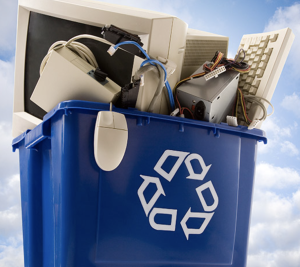E-waste contains hazardous materials like lead, mercury, and cadmium, which, if not properly managed, can leach into the soil and water, causing severe environmental damage. Recognizing this, the Indian government has introduced key regulations to govern the recycling and management of e-waste. These regulations aim to promote environmentally sound recycling, encourage producer responsibility, and protect public health and the environment.
Evolution of E-Waste Regulations in India
India’s e-waste regulatory framework has evolved over the years to address the growing concerns associated with improper disposal and recycling of e-waste. The government has taken several steps to formalize e-waste management and ensure compliance by manufacturers, consumers, and recyclers.
- E-Waste (Management and Handling) Rules, 2011: The first comprehensive regulation for e-waste management in India, these rules came into effect in May 2012. They introduced the concept of Extended Producer Responsibility (EPR), making producers responsible for collecting and managing e-waste generated from their products. The 2011 rules set the groundwork for e-waste management by focusing on reducing hazardous substances in electronic products, promoting e-waste recycling, and involving producers in the recycling process through ewaste in Bangalore.
- E-Waste (Management) Rules, 2016: Building on the 2011 rules, the E-Waste (Management) Rules, 2016 were introduced to strengthen the existing regulatory framework. These rules incorporated several key provisions to address loopholes and ensure better compliance. The 2016 rules extended the scope of responsibilities for producers and included provisions for the involvement of other stakeholders such as consumers, collection centers, and recyclers. They also brought more clarity on EPR, introducing targets for producers and requiring the registration of authorized recyclers.
- E-Waste (Management) Amendment Rules, 2018: The 2016 rules were further amended in 2018 to provide greater clarity and ease of compliance for stakeholders. The amendments revised the collection targets under EPR, streamlined the process for extended producer responsibility plans, and introduced provisions for a Producer Responsibility Organization (PRO) to facilitate e-waste collection and management on behalf of producers.
These regulations mark India’s commitment to improving e-waste management, promoting recycling, and reducing the environmental impact of discarded electronics. Below is a closer look at the key aspects of these regulations.
Key Regulations Governing E-Waste Recycling in India
- Extended Producer Responsibility (EPR)
Extended Producer Responsibility (EPR) is the cornerstone of India’s e-waste management regulations. It places the onus of e-waste collection, recycling, and safe disposal on producers. The concept of EPR was first introduced in the 2011 rules and has been refined over the years through subsequent amendments.
Under the EPR framework, producers are required to ensure that a certain percentage of e-waste generated from their products is collected and sent to authorized recyclers for environmentally sound disposal. EPR aims to create a circular economy by encouraging producers to take responsibility for the full lifecycle of their products, from design and production to end-of-life disposal.
The 2016 and 2018 rules introduced specific collection targets for producers:
- 30% of the e-waste generated by products sold by the producer in the first two years of implementation.
- 40% during the third and fourth years, and 70% by the seventh year.
Producers are required to set up collection centers or take-back programs to facilitate the return of old electronics. They can also partner with a Producer Responsibility Organization (PRO) to help meet their collection targets. The PRO model allows a third-party organization to manage e-waste collection, recycling, and disposal on behalf of producers, streamlining the process and improving compliance.
- Reduction of Hazardous Substances (RoHS)
Another critical regulation included in India’s e-waste management framework is the Reduction of Hazardous Substances (RoHS) directive, which aims to limit the use of dangerous materials in the production of electronics. The RoHS provisions align with global standards, such as those in the European Union, to ensure that electronic products sold in India contain reduced levels of hazardous substances like lead, mercury, cadmium, and hexavalent chromium.
The RoHS guidelines under the 2016 rules mandate that new electronic products should not contain more than a specified percentage of these hazardous substances. This regulation promotes the design of environmentally friendly products and encourages manufacturers to adopt safer alternatives in the production process with Ewaste refining Bangalore.
- Role of Authorized Recyclers and Dismantlers
The 2016 rules and subsequent amendments emphasize the need for formalizing e-waste recycling and ensuring that e-waste is processed by authorized recyclers and dismantlers. Under the regulations, recyclers and dismantlers must obtain authorization from the respective State Pollution Control Boards (SPCBs) or the Pollution Control Committees (PCCs) in union territories to operate legally.
Authorized recyclers are required to follow strict guidelines for the safe recycling and disposal of e-waste, ensuring that hazardous substances do not harm the environment. They must also maintain detailed records of the amount of e-waste processed and provide regular reports to the pollution control authorities.

This regulatory framework aims to phase out informal recycling practices, where e-waste is often handled unsafely, leading to environmental degradation and health hazards. By encouraging formal recycling, the government seeks to reduce the risks associated with informal e-waste processing and promote environmentally sound recycling practices.
- Involvement of Other Stakeholders
The E-Waste (Management) Rules, 2016 introduced several new stakeholders in the e-waste management process, including consumers, bulk consumers, collection centers, and transporters. These stakeholders play a vital role in ensuring that e-waste is collected and recycled responsibly.
- Consumers: Under the regulations, consumers are encouraged to dispose of their old electronics through authorized collection centers or take-back programs set up by producers. They are also required to store their e-waste safely until it is handed over to authorized recyclers.
- Bulk Consumers: Large organizations, government institutions, and industries that generate e-waste in bulk are categorized as bulk consumers. They have additional responsibilities to ensure that their e-waste is handed over to authorized recyclers or collection centers and that they maintain records of the quantity of e-waste generated and disposed of.
- Collection Centers and Dealers: Producers are required to set up collection centers to facilitate the return of e-waste from consumers. These centers serve as designated locations for collecting and storing e-waste before it is transported to recyclers.
- Awareness and Education
A crucial component of e-waste management regulations is the focus on raising public awareness. The government recognizes that many consumers are unaware of the harmful effects of improper e-waste disposal and the availability of formal recycling options. As part of the regulatory framework, producers and other stakeholders are required to conduct awareness campaigns and educate consumers on the benefits of e-waste recycling and the risks associated with informal recycling.
- Penalties for Non-Compliance
To ensure compliance with the e-waste management regulations, the rules provide for penalties in cases of non-compliance. Producers, recyclers, and other stakeholders that fail to adhere to their responsibilities under the EPR, RoHS, or other provisions may face fines or legal action. The enforcement of penalties is intended to encourage stakeholders to follow the rules and contribute to responsible e-waste management.
Challenges and the Way Forward
Despite the robust regulatory framework, India faces several challenges in implementing its e-waste management rules. A significant portion of e-waste is still processed informally, and many producers do not meet their EPR targets. Moreover, public awareness of e-waste recycling remains low, and the infrastructure for formal e-waste collection and recycling is still developing.
To address these challenges, the government needs to strengthen enforcement mechanisms, increase investment in formal recycling infrastructure, and encourage greater participation from producers, recyclers, and consumers. Public-private partnerships and collaboration with international organizations can also help improve electronic waste Bangalore.
In Last:
India’s key regulations governing e-waste recycling represent an important step towards responsible e-waste management. By promoting Extended Producer Responsibility, limiting hazardous substances, formalizing recycling practices, and raising public awareness, these regulations aim to create a sustainable and environmentally friendly approach to managing e-waste. However, continuous efforts are needed to ensure effective implementation and compliance, so that India can successfully tackle its growing e-waste challenge and protect both the environment and public health.







